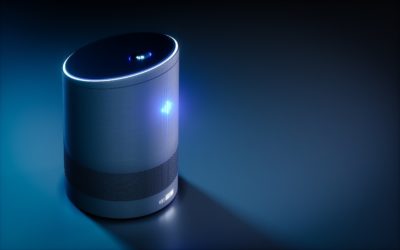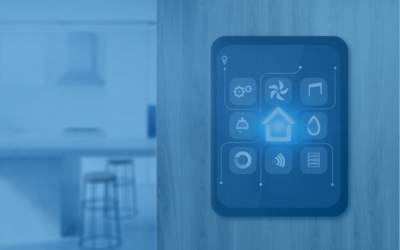Building Large Scale IoT Deployments: How monogoto and DeviceTone Deliver Flexible and Secure Solutions Over Cellular Networks
02
September 2020
by Moshe Ferber
Cloud of Things was established based on the principle of providing customers with a Ready to Run IoT solution enabling them to connect, process data, and control any variety of IoT sensors more easily than ever. We make it simple to make products smart, and we make it possible for product manufacturers to extend their offerings with Connected Field Service applications.
We recently announced a partnership with monogoto to combine their global cellular network infrastructure platform with our IoT platform, using APIs and other collaborative approaches to create, monitor, manage and maintain connected systems in over 170 countries.
Until monogoto launched its game-changing, secure IoT connectivity platform, Cloud of Things was challenged to find the automation, reliability, and security required for building next-generation IoT solutions. This has been especially true for geographically distributed solutions.
The future of large scale IoT projects, including Smart Cities, is dependent on having a reliable, flexible, automated networking infrastructure with the natural benefits of wireless connectivity.
Monogoto provides global, secured, software-defined, cellular infrastructure. They have built a worldwide network that provides capabilities that were lacking in traditional communications infrastructures, such as automated provisioning, network visibility, and integration to 3rd party solutions.
Together, we are addressing the challenges every IoT service provider is faced with:
- Operational challenges. Many implementations use cellular networking, and until a global software-defined platform was available, multiple SIMs had to be used, multiple contracts had to be negotiated and signed, and for projects requiring central control across locations in multiple countries, the complexity associated with differing policies, regulations, and economics made it nearly impossible to do elegantly and affordably.
- Technical challenges. Enterprise customers often have very strict rules associated with routing decisions, types of access, filtering policies, and more. For example, certain IoT products should report to certain data centers; certain users can only access certain subnets. With a unified solution, access and identity management can be managed through a common interface with unlimited flexibility given that the IoT cloud and the networking connecting the edge to the cloud are all virtualized and controllable through software.
- Troubleshooting challenges. Monitoring, managing, and maintaining large scale IoT projects on a network you do not control can become a nightmare. Without visibility into the network, those responsible for quality operations cannot control, and therefore cannot promise resilient, reliable, and secure performance. Lack of real-time information and automation keeps operators from understanding what is happening. Lack of control makes it hard to test configurations, making troubleshooting painful when packets are dropping, ports are closed, and more without proper monitoring, there is no way of understanding where the fault is and how to fix it quickly and cost-efficiently.
The monogoto & DeviceTone integrated solution changes the way we approach global, large scale deployments by:
- Reducing our deployment efforts and simplifying our supply chain
- Automating the process of provisioning new devices
- Unifying operations regardless of the physical location over a single, secure global cellular virtual mobile network
- Delivering a single view on a state-of-the-art “Control Center” administrative monitoring, management, and maintenance application, with a software-defined connected system from the edge to the cloud, across all connected devices
- Providing reliable access to a single SIM card which streamlines production (no waiting for multiple SIM cards to arrive to embed, no need to secure multiple cellular service provider contacts)
While all these benefits are clear, the most compelling benefit of all is the ultra-rich security made possible for even the most complex architectures and mission-critical systems.
Those who end up operating these systems have visibility into the network plane, allowing them to change routing decisions on-the-fly with granular access, resulting in better SLAs and improved redundancy leading to extreme resiliency and predictability.
Traffic flow can go to multiple locations or changed dynamically if an outbreak is detected.
Another bonus is assisting our collective customers with their privacy laws by making sure that traffic is encrypted and never routes through unauthorized jurisdictions.
Auditing and monitoring the traffic, instead of wondering where your packets have gone, is a competitive advantage as our customers can now finally understand what happens to their traffic, just if they were the cellular operator themselves. They can inspect traffic, detect anonymities, and monitor the infrastructure from the network card on the IoT device all the way through the cellular network into our DeviceTone backend.
Many of the old world IoT challenges can be solved by combining the DeviceTone IoT suite with Monogoto’s flexible networking solution. It allows our customers to achieve operational efficiency, create more secure infrastructure, and reduce the overall costs of IoT projects by eliminating operational burdens and delivering sophisticated solutions that are simple to use and extend.
Similar Blogs
Cloud of Things joins the Tondo-Smart group, a leading public smart-city vendor
Ultra-Low Energy (ULE), an extension of the Digital Enhanced Cordless Telecommunications (DECT) physical layer specification that supports low power devices, is becoming an increasingly popular approach, promoted by the ULE Alliance as “a way to provide sensors, actuators and other smart devices in the Internet of Things (IoT) with two-way transmission capability over a dedicated frequency band of 1900MHz.”
DSP Group and Cloud of Things Combine Forces and Introduce a Fully Managed ULE IoT Cloud Services Gateway
Ultra-Low Energy (ULE), an extension of the Digital Enhanced Cordless Telecommunications (DECT) physical layer specification that supports low power devices, is becoming an increasingly popular approach, promoted by the ULE Alliance as “a way to provide sensors, actuators and other smart devices in the Internet of Things (IoT) with two-way transmission capability over a dedicated frequency band of 1900MHz.”
As Smart Home Solution Adoption Explodes, Service Providers Seek Simplicity and Scale
The collapse of the housing market in North America in 2008, driven in large part by the near-collapse of the economy, is now in the rearview mirror. The market today is healthy and evolving, responding to the impact of COVID-19 in America’s largest cities, which is driving up the prices of luxury homes in the suburbs and more affordable housing for those looking to leave small, cramped apartments and work remotely from larger, affordable apartments as remote working becomes more acceptable to certain businesses.


